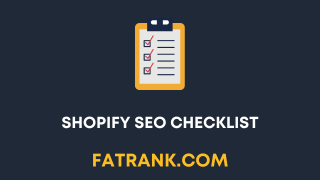
Shopify SEO Checklist
Contents
- Key Takeaways:
- Understanding Shopify SEO and its importance
- Common Shopify SEO issues to fix
- Setting up a custom domain for better Shopify SEO
- Keyword research and optimization
- Optimizing product pages for SEO
- Creating high-quality content for SEO
- Building backlinks to improve SEO
- Monitoring and adjusting your Shopify SEO strategy
- Additional tips and tricks for Shopify SEO success
- Utilizing tools like Google Analytics and Google Search Console for better SEO performance
- Some Facts About Shopify SEO Checklist:
- FAQs about Shopify Seo Checklist
- Other Shopify Guides
Key Takeaways:
- Shopify SEO is the process of optimizing your Shopify store to improve its ranking in search engines and increase organic traffic to your site.
- Shopify SEO is important because it helps potential customers find your store and products more easily, leading to increased sales and revenue.
- Common Shopify SEO issues to fix include duplicate content, duplicate page titles, forced URL structure, poor site architecture, and default Shopify using product names for title tags.
- Removing duplicate URLs from internal linking architecture can improve SEO on Shopify.
- A custom domain is a prerequisite for Shopify SEO. Choosing a short, easy-to-remember, brandable, and related to business and industry domain is ideal. Including a keyword related to the business is optional. Up to 10 domains and sub-domains can be added to the Shopify store. Setting the primary domain to redirect customers is important for Shopify SEO.
- Conducting keyword research, optimizing site speed, optimizing product pages, creating high-quality content, building backlinks, and monitoring and adjusting the Shopify SEO strategy are essential practices for Shopify eCommerce SEO.
- Utilizing tools like Google Analytics and Google Search Console can provide valuable insights into the performance of the Shopify SEO strategy and help identify areas for improvement. Setting up Bing Webmaster tools is also recommended.
- SEO is an affordable and impactful digital marketing strategy for driving motivated traffic to Shopify stores. Properly optimizing web pages can increase organic traffic and potential customers. Unlike Google Ads or social media advertising, SEO can drive site traffic long after ad budgets run out.
- The author of the Shopify SEO checklist, Crystal Waddell, offers to send reminders about their SEO podcast called The Smart and Simple SEO Show. Readers can provide their Shopify-related email at checkout and confirm their subscription.
Understanding Shopify SEO and its importance
If you’re running an online store, you need to pay attention to how people are finding it. That’s where search engine optimization (SEO) comes in. In this section, we’ll explore how SEO works with Shopify, why it’s important for your business to implement an SEO strategy, and how it can make a significant difference in your success rates. So, what exactly is SEO, and why does it matter? Let’s dive in.
What is Shopify SEO?
Shopify SEO is the process of optimizing a website built on the Shopify platform for improved visibility and ranking on search engine results pages (SERPs). This involves conducting keyword research and optimization, creating high-quality content, building backlinks, and monitoring the site’s performance. Optimizing a Shopify website for SEO can increase traffic and improve rankings on popular search engines like Google.
One critical aspect of Shopify SEO is fixing common issues that may affect a site’s visibility online. Among these issues are duplicate content, poor site architecture, and default product names used in title tags by Shopify. However, creating a custom domain can help enhance a brand’s reputation while also improving SEO performance.
Conducting keyword research is essential to optimize a Shopify website for popular or relevant business keywords. Product pages can then be optimized by clearly describing all content and using blogging tools where necessary. High-quality content is another vital factor in enhancing SEO performance as it attracts potential customers while providing valuable information to search engines. Effective backlinks are also crucial in improving ranking position, as they demonstrate authority.
Monitoring and adjusting Shopify SEO strategies using Google Analytics and Search Console allows website owners to measure overall performance while highlighting areas that require improvement. Social media platforms offer various opportunities to grow organic traffic from unique visitors, and engaging with audiences helps create trust towards the brand behind the store.
By implementing these tips, businesses can optimize their Shopify SEO strategies while leveraging different tools available for improved SERP rankings.
Why is Shopify SEO important?
Shopify SEO is vital for any business that wants to increase their visibility on search engine results pages. By optimizing a Shopify website’s structure, content, keywords, and backlinks, businesses can generate more organic traffic and ultimately, boost sales. A strong Shopify SEO strategy requires fixing common issues like duplicate content and poor site architecture, setting up a custom domain, conducting keyword research, and optimizing product pages for SEO.
Quality content is crucial for improving Shopify SEO performance. By creating engaging content that establishes brand authority, businesses can attract more traffic to their website. Backlinks are also essential for boosting Shopify SEO, as they increase a website’s credibility from other sites with high domain authority.
By prioritizing their Shopify SEO strategy and utilizing tools like Google Analytics and Google Search Console, businesses can monitor their progress and make necessary changes to ensure continued success. Effective implementation of Shopify SEO can result in higher traffic volumes and increased sales. Therefore, it is essential to fix common Shopify SEO issues before they negatively impact the website’s performance. So, businesses must remember, “why is Shopify SEO important?” because it can help them stay competitive with their rivals and gain an advantage in the marketplace.
Common Shopify SEO issues to fix
Many Shopify store owners are unaware of the SEO issues that may harm their search engine rankings. To improve the SEO of your store, it is important to address common issues such as duplicate content, suboptimal site architecture, and the default use of product names for title tags in Shopify. By remedying these issues, you can enhance your store’s SEO and drive more traffic to your site.
Duplicate content
Opposite to what most people might think, duplicate content is not merely a penalty applied by search engines. In fact, it can negatively affect your ranking status and user experience without you even being aware of it. Shopify SEO emphasizes generating unique and fresh content, which is crucial for an online store’s profitability, visibility, and conversion rate.
Duplicate content refers to similar or identical content on different pages of your website or other websites. Search engines have to decide which page should be ranked higher in SERP for particular keywords and phrases. This decision-making process may confuse the search engines leading to lower rankings. Moreover, if there are several identical pages on the same website, it will affect the user experience, causing them to question why they have clicked multiple links only to find duplicate information.
To avoid the negative effects of duplicate content on your Shopify website, one must keep track of every URL providing unique contents in-page titles, meta descriptions, H1 headings while ensuring that their URLs are structured correctly. Interlinking between internal pages with various keywords can also help search engine bots crawl through the website seamlessly.
Besides taking care of these technical aspects such as canonical URLs and robots.txt files indexing selection; content-wise Shopify experts suggest exploring innovative ideas like spinning product descriptions using paraphrases or presenting a single piece of information from different angles and amplifying visual advantages wherever possible.
Building your Shopify SEO on a shaky foundation of poor site architecture is like building a sandcastle in a hurricane.
Poor site architecture
Site architecture is a vital aspect of website design as it refers to the way a website’s pages are organized and their hierarchy. Unfortunately, poor site architecture is a common issue that can significantly harm a website’s performance in terms of both user experience and search engine optimization (SEO).
One of the most typical problems with poor site architecture is having too many levels of navigation or unclear links to important pages. This can result in users and search engines struggling to find relevant content, ultimately leading to poor indexing and ranking. Additionally, having multiple URLs that lead to similar or identical content can create duplicate content issues that harm SEO performance. Search engines prefer unique content, and having duplicate content can lead to lower rankings.
Moreover, the use of default Shopify URLs can also contribute to poor SEO performance as they use generic product names rather than more descriptive titles with targeted keywords. It’s essential for website owners to ensure that their site architecture is optimized by implementing clear and concise navigation menus, well-organized page hierarchies, removing duplicate URLs, and using more descriptive titles that include targeted keywords.
By following these best practices, websites can become easier for both users and search engines to navigate, resulting in improved organic traffic and better overall SEO performance. Don’t let poor site architecture harm your website’s potential – take the necessary steps to optimize it and reap the rewards.
The default title tags used on Shopify can be problematic for SEO because they often use product names instead of relevant keywords that accurately describe the content of the page. This can lead to duplicate content and poor SEO performance. To avoid this issue, it is essential to customize your Shopify store’s title tags by incorporating relevant keywords that clearly and accurately describe the content on each page. This will help search engines understand the purpose of your website and index your pages appropriately, leading to improved SEO performance.
Customizing your title tags will also benefit users by providing clear and concise information about the content on each page. This can increase click-through rates and ultimately lead to higher conversions. To avoid confusion among users and search engines, it is important to avoid using duplicate title tags across multiple pages. Instead, each page should have a unique and descriptive title tag that accurately reflects its content.
In conclusion, customizing your Shopify store’s title tags with relevant keywords is a critical step in improving your website’s SEO performance. By avoiding duplicate content and providing clear and concise information, you can ensure that search engines and users understand the content of each page and rank it accordingly in search results.
Setting up a custom domain for better Shopify SEO
Setting up a custom domain is an important factor for optimizing your Shopify SEO. A custom domain helps to establish brand identity and build trust with customers. Follow these easy-to-follow steps to set up a custom domain on Shopify.
Factual Data:
– A custom domain helps to establish brand identity.
– A custom domain helps to build trust with customers.
Why you should set up a custom domain
A custom domain is essential for Shopify SEO success because it allows you to establish a unique identity and promote brand awareness. It also helps to enhance the credibility of your Shopify store and makes it easier for your target audience to find you online. By setting up a custom domain, you increase the chances of your website ranking higher on search engines such as Google.
One significant advantage of having a custom domain is that it ensures consistency in branding across multiple channels. This consistency makes it easier for customers to recognize and recall your brand. You can also create more user-friendly and optimized URLs that better represent your brand, which is critical for improving visibility on search engine results pages (SERPs) and supporting search engine algorithms’ ranking factors.
Although it might be tempting to use the default Shopify domain because of the cost implications, having a customized URL offers numerous benefits that outweigh the initial costs. A custom domain builds trust with customers, increases professionalism, and creates an image of credibility.
Moreover, having a custom domain is useful for SEO rankings, and it adds uniqueness to your website, which is essential when expanding your business outside of Shopify in future endeavors. Hence, it is crucial to set up a custom domain if you want to reap long-term benefits from an SEO perspective and business growth potential on search engines like Google.
How to set up a custom domain on Shopify
To achieve an effective Shopify SEO strategy, it is crucial to set up a custom domain. This step aids in brand recognition, enhances credibility, and boosts online visibility. Here are the necessary steps to follow when setting up a custom domain on Shopify.
Step 1: Purchase a Custom Domain
To get started, you need to buy a domain from hosting providers or registrars like Namecheap, Google Domains, or GoDaddy. You can choose your business niche and use the brand or product name when creating the domain name.
Step 2: Connect Your Domain
After purchasing the domain, log in to your Shopify account and navigate to “Online Store”, then “Domains”. Next, click on “Connect Existing Domain” and enter the purchased domain name to connect it to Shopify.
Step 3: Validate Your Setup
Before concluding the process, validate if you’ve set it up correctly by checking the DNS Settings hosted under A record and CNAME record values. These values are typically provided by Shopify based on domain providers and their settings interface.
It is also important to note that when using a custom domain, you need to configure SSL certification, which enhances search engine ranking benefits. You can install the SSL certificate by going back to “Online Store”, then “Domains”, followed by “SSL Certificates” and “Install”.
After the installation, allow for a 24-48 hour delay period for domain propagation before it appears live on search engines. When setting up a custom domain on Shopify, you get higher website traffic and customer engagement. It’s essential to avoid changing domains as it negatively impacts online reputation. Instead, purchase a custom domain extension with .com because it finds more response on Google searches.
Finally, ensure continuity of URLs throughout the pages when moving towards HTTPS protocol after applying SSL certification instead of the HTTP protocol previously used. This effort ensures that critical web pages do not lose much traffic during the transition phase after certificate installation. Optimize your Shopify website for maximum SEO impact by unleashing the power of keywords. Follow these steps for setting up a custom domain on Shopify to improve your online business presence.
Keyword research and optimization
Keyword research and optimization is a crucial part of any successful e-commerce SEO strategy. In this section, we’ll explore how to conduct effective keyword research and optimize your Shopify website for keywords. With over 1.7 billion websites worldwide, it is essential to use relevant and specific keywords that rank well in search engines. We will provide you with tips and techniques for choosing the right keywords and integrating them throughout your website to improve your search engine rankings.
Conducting keyword research
Keyword research is an essential aspect of an effective Shopify SEO strategy. Conducting keyword research involves identifying relevant keywords for your business, target audience, and products. By researching keywords, you can discover popular search terms and optimize your website content to rank higher in search engine results pages.
To conduct keyword research effectively, several tools and techniques are available. Utilizing platforms such as Google Keyword Planner can help identify potential keywords to use throughout your site’s content. It is crucial to ensure that these keywords appear naturally within your content to increase the likelihood of ranking and attracting relevant traffic.
It is essential to note that while conducting keyword research is crucial, it should not be the only strategy used. Combining effective content marketing strategies with optimized keywords creates a well-rounded approach to building traffic and improving page rankings.
Proper keyword research enables you to formulate an SEO strategy that targets specific groups of consumers interested in your products while also catering to broader search queries within your industry niche.
Optimizing your Shopify website with the right keywords will unlock its potential.
Optimizing your Shopify website for keywords
To improve the visibility of your Shopify website, optimizing it for keywords is essential. This involves conducting thorough keyword research and strategically placing those keywords throughout your website’s content.
Using relevant, targeted keywords in your product descriptions, titles, and meta descriptions can help search engines understand the content of your pages and improve their ranking on search engine result pages.
By optimizing your Shopify website for keywords, you can effectively communicate the purpose and content of your website to both search engines and potential customers.
One unique detail to consider when optimizing for keywords is the importance of incorporating long-tail keywords. These are specific phrases that are more targeted than general keywords and can help attract a more qualified audience to your Shopify store. Make sure to incorporate these long-tail keywords naturally throughout your website’s content.
Get your products found with these tips for optimizing your Shopify product pages for SEO.
Optimizing product pages for SEO
When it comes to optimizing product pages on Shopify for SEO, there are a few key things you should keep in mind. One of the most important is ensuring that the content on your pages is clearly and accurately described. Additionally, using blogging tools to enhance the content on your product pages can also have a big impact on your overall SEO success. So, how can you make sure your product pages are up to snuff? Let’s take a look at these two important sub-sections and find out.
Clearly describing content on product pages
Product pages are a crucial aspect of any e-commerce store that sells physical products. It is imperative to provide accurate and detailed descriptions of the products on these pages to attract potential customers. By clearly describing the content on product pages, you can increase search engine visibility and improve user experience, leading to higher conversion rates.
To create effective content on product pages, you should begin by writing a clear and concise title tag that includes relevant keywords. Use bullet points or short paragraphs to describe the features, benefits, and specifications of your product. Additionally, including high-quality images from various angles can provide an accurate representation of the product.
It is essential to avoid using duplicate content on your website. Duplicate content can adversely affect your SEO efforts, which is why each product must have a unique description that is free of spelling or grammatical errors.
It’s worth noting that well-written descriptions can help you rank higher in search engines for long-tail keyword searches related to your products. Thus, it is essential to research and use specific keyword phrases in your product descriptions that are relevant to customers searching for what you offer. So, when creating content for your product pages, make sure to keep all these things in mind and optimize your content for search engines and customers alike.
Using blogging tools for content on product pages
To improve your Shopify SEO, one important tactic is to incorporate blogging tools into your content strategy. By doing so, you can offer customers extensive information about each product, share engaging stories, and provide valuable tips. This will help improve your website’s search engine ranking and gain valuable backlinks.
Creating high-quality blog content on product pages is essential. It is important to ensure that your content is both relevant and engaging, and that internal links to related products or blog posts are included to keep customers interested in your site for longer periods of time. Moreover, including targeted keywords in your organic content through blogging can further improve your search engine optimization and increase your chances of ranking higher on SERPs.
Social media promotion is also an essential step when using blogging tools for your product pages. This can help you reach a larger audience and potentially increase website traffic.
In conclusion, using blogging tools is a cost-effective approach to boosting sales and customer engagement for your Shopify store, and creating valuable content with targeted keywords and internal linking is an integral part of improving your overall Shopify SEO.
Creating high-quality content for SEO
High-quality content is crucial for improving SEO rankings. In this section, we’ll explore why creating high-quality content matters for SEO and provide tips for crafting content that’s optimized for search engines.
Why high-quality content is important for SEO
High-quality content is crucial for Search Engine Optimization (SEO) on all websites, including those on Shopify. To ensure high visibility on search engines, it is vital to create descriptive and informative content that provides value to users. According to Google’s algorithm, websites with high-quality content rank higher in search engine results pages.
Creating outstanding content is essential as it attracts and retains visitors to your website, which helps reduce bounce rates. Engaging content encourages social sharing and encourages users to return for more. Understanding your target audience and conducting thorough research is crucial for developing high-quality content. Using relevant keywords can improve its visibility on search engines, but keyword stuffing should be avoided. The language should flow naturally and drive reader engagement.
Quality content not only drives organic search traffic but also establishes you as an industry authority, increasing credibility, brand awareness, and referral traffic. Investing time in crafting original, engaging webpages will help heighten the SEO of your Shopify website, improving its ranking on Google’s search engine results pages, and leading to a broader customer base.
In conclusion, crafting high-quality content is important for SEO on Shopify, as it attracts and retains visitors, encourages social sharing, establishes authority, and drives organic search traffic. Follow these tips to unleash creativity, captivate your audience, and boost your Shopify SEO.
Tips for creating high-quality content for SEO
If you’re looking to develop high-quality content for SEO on your Shopify website, there are a few tips you should keep in mind. One crucial tip is to conduct thorough keyword research to identify relevant and appropriate keywords to use in your content. Be sure to incorporate them naturally into your title tag, meta description, headers, and body text. But be aware that keyword stuffing, or overly using irrelevant or subpar keywords, can do more harm than good.
Another vital tip is to focus on creating authentic and valuable content that speaks directly to your audience’s interests and needs. Avoid publishing duplicate or low-quality content, as this can significantly impact your SEO rankings negatively. Instead, invest your time and effort in crafting informative, engaging, and well-written content that your audience will find valuable. Always ensure that your content is original and not copied from other sources.
In addition to creating valuable content, it’s essential to structure your content correctly. Use headings, subheadings, and lists to make your content easy to navigate and read. Proper formatting will help search engines understand the structure and content of your page, which can positively impact your SEO.
By following these tips for developing high-quality SEO content on your Shopify website, you can enhance your website’s visibility and attract more traffic and customers over time. With careful attention paid to keyword research, content authenticity, and structure, you can avoid any harmful SEO practices that could impact your website’s growth.
Building backlinks to improve SEO
Backlinks are an important factor in SEO, but they are not necessarily the backbone. Backlinks can help improve a website’s rankings in search engines, but there are many other factors involved. In this section, we’ll discuss the importance of backlinks for SEO and provide guidance on building high-quality backlinks for your Shopify website.
Why backlinks are important for SEO
Backlinks play a vital role in SEO, and it’s no wonder why backlinks are important for SEO. They serve as signals to search engines such as Google that your website is credible and valuable, as other websites are linking to it.
With the help of backlinks, your website’s domain authority can improve, which can then boost your chances of ranking higher in search results. Therefore, it’s important to focus on building high-quality backlinks to reinforce your online presence and make your website more visible to potential customers or readers.
How to build backlinks for your Shopify website
Building backlinks is an essential aspect of Shopify SEO that can help increase website traffic and improve search engine rankings. Backlinks are links from external websites that direct users to your website, and search engines consider them as a vote of confidence in your site’s quality and relevance.
To build backlinks for your Shopify website, follow these three points:
| Step | Action |
|---|---|
| 1 | Identify high-quality websites that are relevant to your business or niche. |
| 2 | Reach out to these websites and request them to link back to your site through guest blogging, press releases, or partnerships. |
| 3 | Create valuable content on your website that others would want to link back to naturally. |
It is important to note that backlinking should be done in a natural way, without resorting to buying links or using manipulative tactics that violate search engine guidelines.
In addition, it is essential to have a diverse set of high-quality backlinks from various sources rather than relying on a single source. This helps prevent penalties or negative impacts on SEO rankings due to over-reliance on one kind of link.
Pro Tip: Focus on building relationships with other sites in your industry or niche, as these connections can lead to natural and relevant linking opportunities over time.
Keep a keen eye on your Shopify SEO performance by regularly monitoring and tweaking your strategy with the help of Google Analytics and Google Search Console.
Monitoring and adjusting your Shopify SEO strategy
Maintaining a solid eCommerce SEO strategy is crucial for the success of your online store. In this section, we’ll discuss the importance of monitoring and adjusting your eCommerce SEO plan, and how it can impact your online business. We will take a look at two tools, Google Analytics and Google Search Console, that can help you monitor and improve your eCommerce SEO performance. Let’s dive in!
Using Google Analytics to monitor your Shopify SEO performance
If you want to keep a close eye on the performance of your Shopify SEO, then Google Analytics is a must-have tool. Not only does it offer comprehensive insights into website traffic, but it also gives you a detailed picture of how visitors engage with your site and how they arrived there.
By utilizing Google Analytics, you can easily identify any issues in your Shopify SEO strategy and make the necessary adjustments to improve it. The platform’s robust tracking capabilities enable you to monitor user behavior, such as how long they stay on a page, which pages they visit the most, and where they go after they arrive on your site. Armed with this information, you can refine your SEO tactics and optimize your website’s user experience.
But that’s not all. Google Analytics can also provide valuable statistical information on your website’s traffic sources. You can track the number of visitors who came from search engines or social media sites, which can help you determine where to focus your marketing efforts.
To get the most out of Google Analytics and other analytics tools, it’s essential to regularly check and analyze the data trends over time. You should also compare specific periods to understand the impact of changes you’ve made to your site’s structure, content, or SEO tactics.
In short, if you want to improve your Shopify SEO strategy continuously, take advantage of tools like Google Analytics. By keeping a close watch on your site’s performance and making adjustments accordingly, you’ll increase your chances of achieving optimal outcomes.
Using Google Search Console to monitor and improve your Shopify SEO
Google Search Console is an essential tool when it comes to monitoring and improving your Shopify SEO. By utilizing this powerful platform, you can better understand your website’s performance in Google’s search engine results page (SERP) and make necessary adjustments to enhance its visibility.
To get started with Google Search Console for Shopify SEO, follow these six simple steps:
| 1. Verify your website | – First, add a verification code to your HTML tags to confirm your Shopify website with Google Search Console. |
| 2. Submit a sitemap | – Once verification is complete, submit your sitemap to Google through the Search Console. This ensures that your website’s pages are appropriately crawled. |
| 3. Monitor site performance | – Check on your website’s overall performance through the Search Console. This includes any crawl errors or mobile usability problems that need addressing. |
| 4. Check for manual actions | – Search Console will alert you if Google has taken any manual actions against your website. |
| 5. Analyze search analytics data | – Utilize Search Console’s search analytics reports to gain insight into what queries are leading users to your site and how often they click on your results. |
| 6. Monitor backlinks | – Finally, use Search Console to keep track of who is linking back to your website and the quality of those links. |
Google Search Console is a tool that can help identify any issues with traffic flow or indexing problems with websites, allowing you to keep your website up-to-date on its status effectively. Regular monitoring and making necessary changes using tools like Google Analytics can maximize session time spent on your website and improve customer retention rates, ultimately keeping up with digital growth.
In a true story, a Shopify business owner regularly utilized Google Search Console and could identify severe SEO challenges unbeknownst to him, leading to months of lower conversion rates. However, with early detection, he quickly addressed these obstacles, resulting in immediate increases in customer satisfaction levels and overall sales boost within just a few weeks.
Enhance your Shopify SEO game with these tips and tricks on using Google Search Console to monitor and improve your website’s performance in the SERP.
Additional tips and tricks for Shopify SEO success
Want to take your Shopify store’s SEO to the next level? Look no further than these additional tips and tricks! In this section, we’ll cover how optimizing your website’s meta tags and descriptions can boost your Shopify SEO, as well as how having high-quality content can lead to even better results. With these strategies backed by data and industry experts, you’ll be on your way to dominating search rankings and driving more traffic to your Shopify store.
If you’re running a Shopify website, utilizing social media can greatly benefit your search engine optimization (SEO) efforts. By regularly posting relevant and engaging content on Facebook, Instagram, Twitter, LinkedIn, and other social media platforms, you can increase your visibility among potential customers, acquire valuable backlinks to your website, and improve your overall online presence.
To get the most out of social media for your Shopify SEO, it’s important to maintain active accounts on major platforms and share quality content that resonates with your target audience. Additionally, integrating social media sharing buttons on your Shopify store’s product pages can encourage customers to share your products with their networks, potentially leading to more backlinks and referral traffic.
One example of a company successfully leveraging social media for their Shopify SEO is Bird Collective. By sharing high-quality images of birds on their website, Instagram, and birding community forums like eBird, Bird Collective was able to improve their organic search rankings over time and ultimately increase their online sales revenue.
Engaging with your audience for better Shopify SEO
To improve Shopify SEO, engaging with your audience is essential. It is vital to optimize your website by using relevant keywords, meta tags, and descriptions for your products. This approach attracts more traffic and search engine visibility, ultimately improving your website’s overall search ranking significantly.
Furthermore, creating engaging and relevant content on your website and blog and sharing it through social media platforms helps create a positive community around your brand, leading to positive reviews and feedback from customers. Social media interaction also leads to backlinks that further benefit Shopify SEO performance by driving more traffic towards the website.
By incorporating these strategies and engaging with your audience, your website can improve its search engine ranking and attract more potential customers to your online store.
Utilizing tools like Google Analytics and Google Search Console for better SEO performance
Maximizing SEO performance is crucial for businesses looking to enhance their online presence and drive success. Google Analytics and Google Search Console are powerful tools that can provide valuable insights for achieving this goal. By utilizing these tools, businesses can develop effective strategies to increase visibility, improve user experience, and drive conversions.
Through Google Analytics, businesses can track website traffic, referral sources, and user behavior, allowing them to identify high-performing pages and areas for improvement. By analyzing user behavior, businesses can optimize website content and design, which can result in increased engagement and conversion rates.
On the other hand, Google Search Console provides information about website ranking and search engine performance. Monitoring search queries is a key feature of the console, allowing businesses to identify relevant keywords and topics to incorporate into their website content. Incorporating these relevant keywords can lead to improved search engine rankings and increased traffic to the website.
To fully leverage the benefits of these tools, businesses should regularly monitor and analyze the data provided. This can help identify trends and patterns, allowing for adjustments to be made to SEO strategies and tactics. By utilizing Google Analytics and Google Search Console, businesses can elevate their SEO performance and enhance their online presence.
Some Facts About Shopify SEO Checklist:
- ✅ Shopify powers over 1,000,000 small to large businesses worldwide, making competition intimidating. (Source: https://popupsmart.com/blog/shopify-seo-checklist)
- ✅ While Shopify comes with several useful SEO features, it can also cause SEO issues such as duplicate content, duplicate page titles, and forced URL structure. (Source: https://popupsmart.com/blog/shopify-seo-checklist)
- ✅ The Shopify eCommerce SEO checklist includes setting up essential tools like Google Analytics, optimizing site speed, conducting keyword research, optimizing product pages, creating high-quality content, building backlinks, and monitoring and adjusting your SEO strategy. (Source: https://popupsmart.com/blog/shopify-seo-checklist)
- ✅ A custom domain is a prerequisite for Shopify SEO, and a short, easy-to-remember, brandable, and related to business and industry domain is ideal. Including a keyword related to the business is optional. Up to 10 domains and sub-domains can be added to Shopify store. Sub-domains can be created through Shopify or domain provider. Setting primary domain to redirect customers is important for Shopify SEO. (Source: https://www.digismoothie.com/blog/shopify-seo-checklist and https://meetanshi.com/blog/shopify-seo-checklist/)
- ✅ SEO is an affordable and impactful digital marketing strategy for driving motivated traffic to Shopify stores and can drive site traffic long after ad budgets run out. (Source: https://searchenginejournal.com/shopify-seo-checklist/433674/)
FAQs about Shopify Seo Checklist
What is a Shopify SEO Checklist?
A Shopify SEO Checklist is a list of guidelines and best practices to help improve the search engine ranking of Shopify stores. It covers essential Shopify SEO features to help optimize website content, structure, and settings for better visibility on search engine results pages (SERPs) and increased organic traffic to your site.
Why is a Shopify SEO Checklist important?
A Shopify SEO Checklist is important because it helps businesses improve their online visibility, drive more traffic to their site, and increase sales conversions. It is a critical component of any digital marketing strategy for Shopify stores as it allows potential customers to find the products or services they are looking for more easily. With over 1,000,000 small to large businesses worldwide using Shopify and considerable competition, implementing SEO best practices that can improve search engine performance is crucial.
How can a Shopify SEO Checklist help me?
A Shopify SEO Checklist can help you by providing a step-by-step guide to improve your store’s ranking in search engine listing results. By following the checklist, you will have a better understanding of the SEO basics and be able to optimize your store’s content, product pages, and other aspects of your online presence to drive more organic traffic to your site. Apart from the essential components mentioned before, an SEO checklist also includes removing duplicate URLs from internal linking architecture which can cause SEO issues.
How does Google love content on Shopify product pages?
Google loves content on Shopify product pages that are unique, informative, and provide a good user experience. This means including product descriptions, pricing, images, and videos. Having a clear and informative product page helps Google understand what the page is about, which can improve its ranking on search engine results pages and result in more organic traffic to the site. Hence creating high-quality and unique product descriptions is crucial to improve your store’s search engine performance.
What are Bing Webmaster Tools, and how can they help my Shopify store?
Bing Webmaster Tools are a search engine optimization (SEO) platform provided by Microsoft. It allows website owners to monitor the performance of their site in Bing search results and identify issues that could prevent it from ranking. Bing accounts for 15% of all searches in the United States, making it a vital search engine to consider when optimizing your Shopify store for organic traffic. By setting up Bing Webmaster Tools, businesses can identify issues that need addressing and optimize their site’s performance on the search engine.
Other Shopify Guides
Check out our A-Z Shopify SEO Guides:
- A Guide To Robots.txt on Shopify

- Best SEO Apps for Shopify

- Best Shopify Themes for SEO

- Blogging on Shopify: How To Do It For SEO Traffic
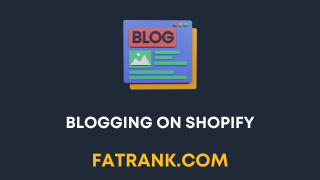
- Can you change the Shopify URL Structure?
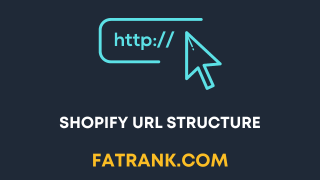
- Common Shopify SEO Issues
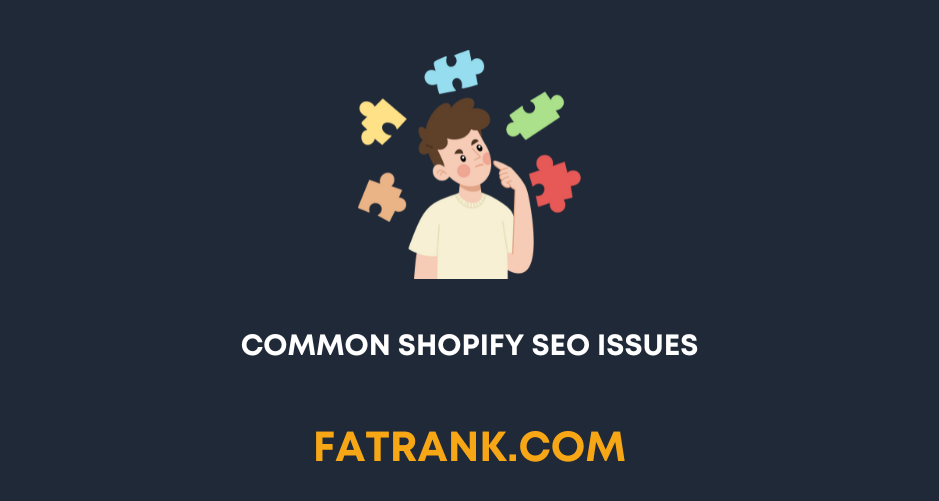
- Does Changing the Shopify Store Name Affect SEO
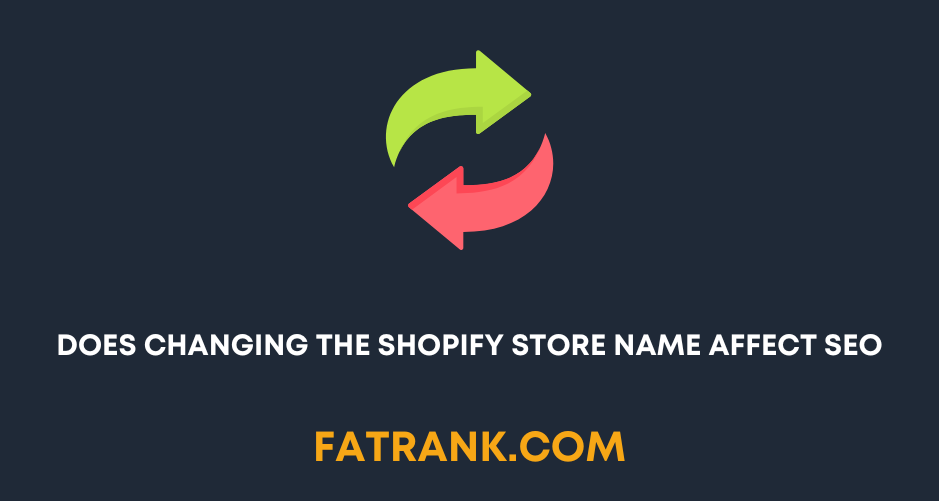
- Guide On Using Metafields In Shopify

- How Much Does Shopify SEO Cost

- How To Add Content To Shopify Collection Pages

- How To Add Keywords To Your Shopify Store For SEO
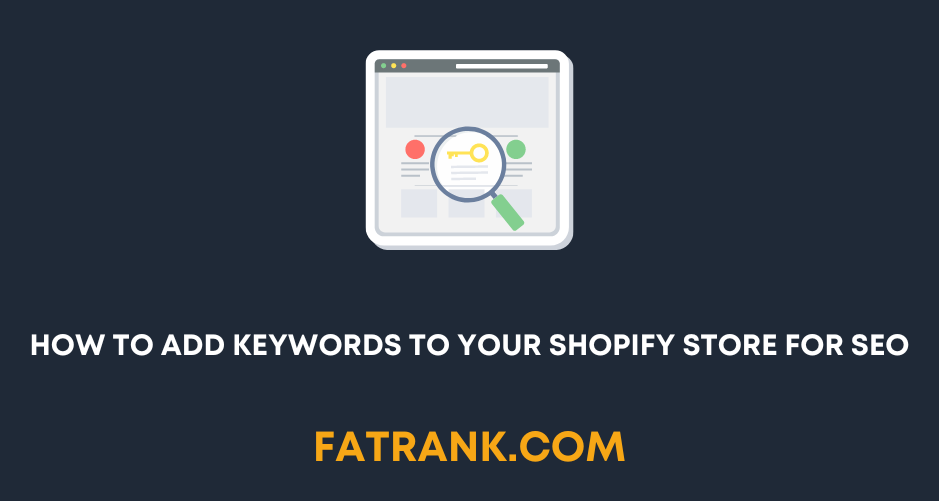
- How To Remove Duplicate Titles From Shopify Store
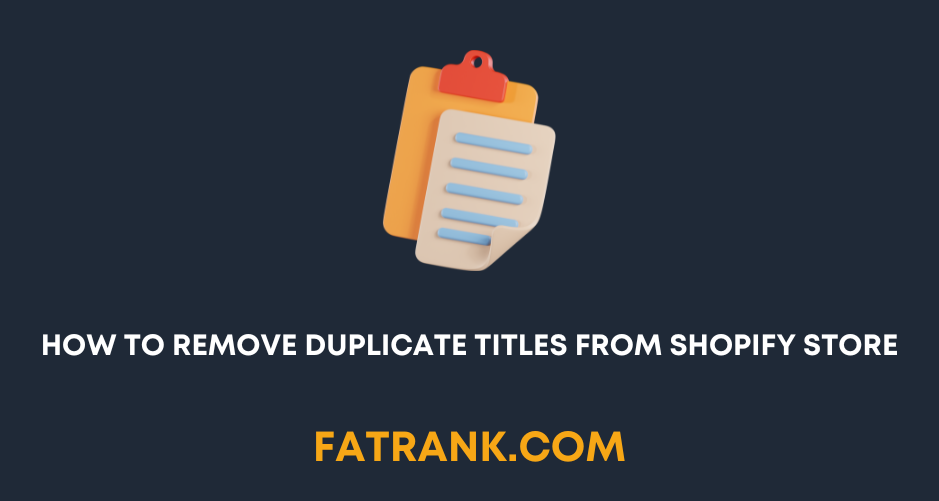
- How to Set up Multiple Shopify Stores Under One Domain

- Improving Search in Shopify Plus
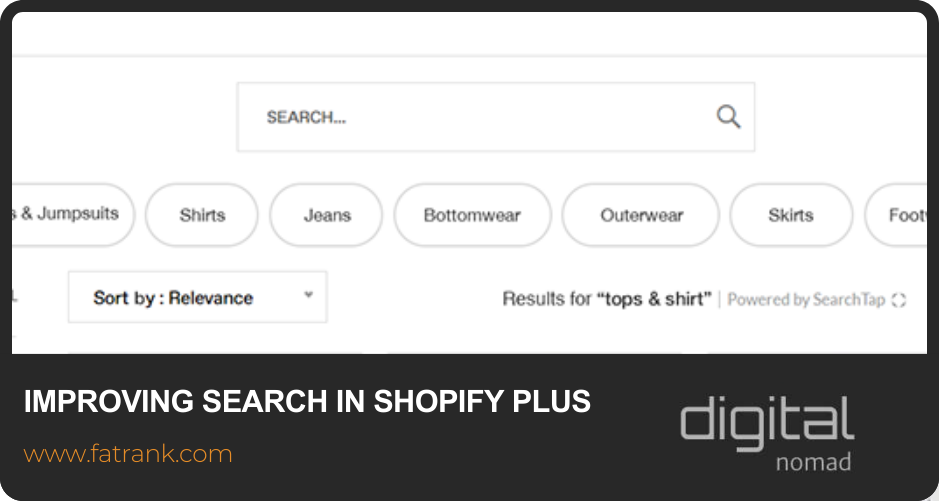
- Is Shopify bad for SEO? A Detailed Review
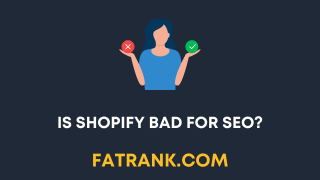
- Keyword Research for Shopify Stores
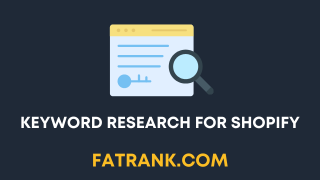
- Link Building for Shopify: Full Tutorial
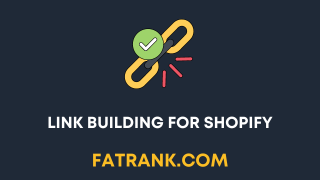
- Shopify Breadcrumbs SEO Issues

- Shopify Collection Page SEO: The Definitive Guide
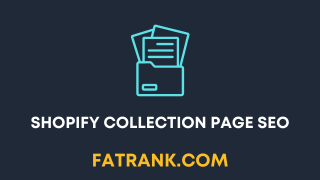
- Shopify Image Optimization: Speed & SEO Guide
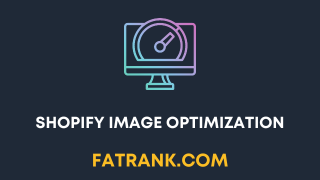
- Shopify International: Multi-Currency & Multilingual Setup
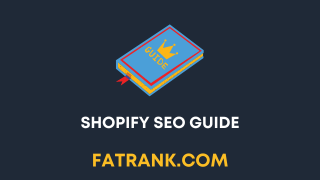
- Shopify On Page SEO Tutorial
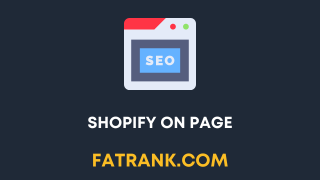
- Shopify Plus SEO

- Shopify Plus SEO: Potential Limitations

- Shopify Product Tags SEO: Why It's Bad & How To Fix It
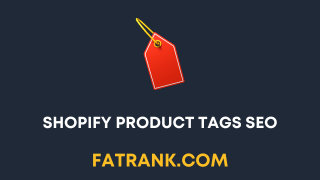
- Shopify Rich Snippets Tutorial: No App Needed

- Shopify SEO Agency
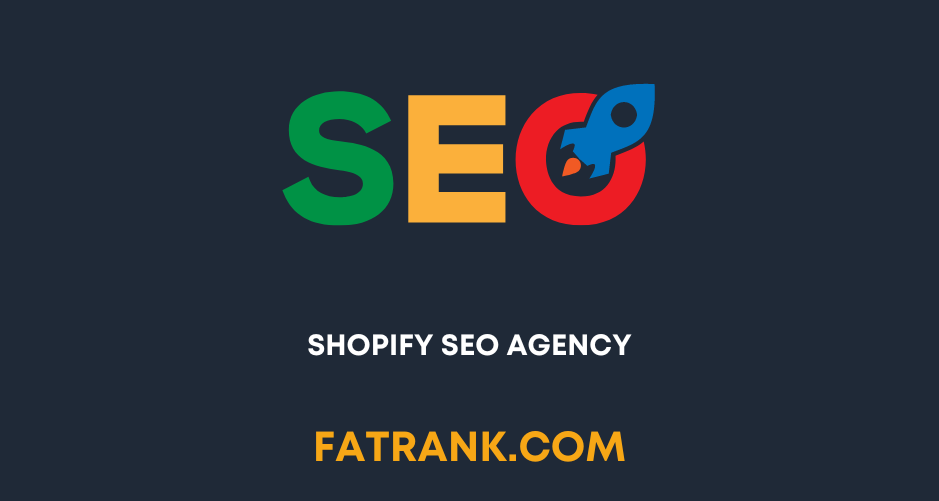
- Shopify SEO Case Study
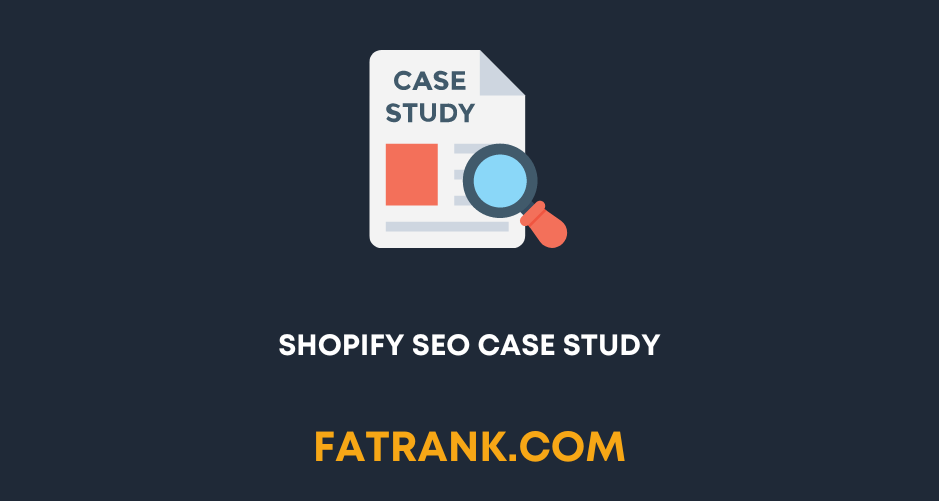
- Shopify SEO Checklist

- Shopify SEO: The Definitive Guide

- Shopify Sitemap: Find & Submit Your XML Sitemap to Google
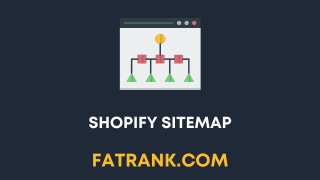
- Shopify Speed Optimization Guide
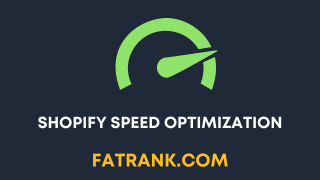
- Technical SEO for Shopify
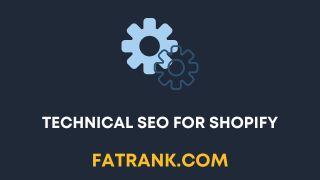
- Why Is No One Buying From My Shopify Store
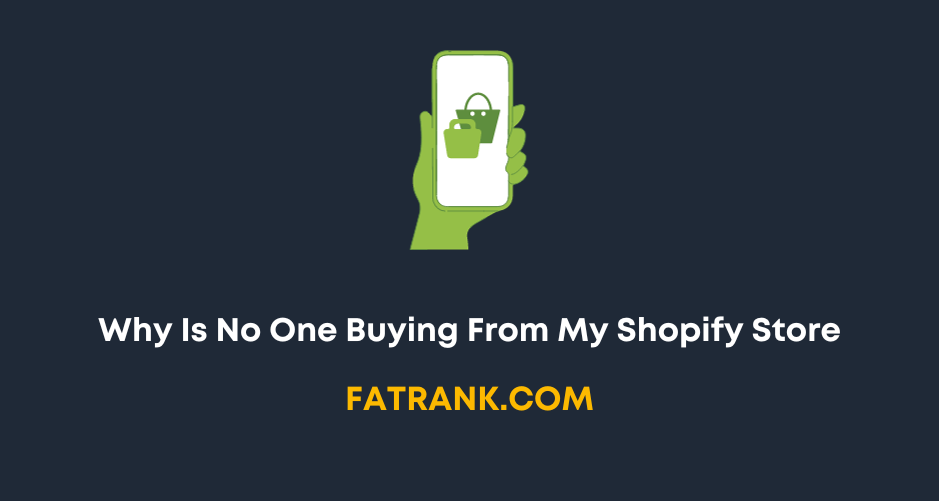
- Workarounds for the Shopify Variants Limit


About FatRank
Our aim to explain and educate from a basic level to an advanced on SEO and Social Media Marketing.
